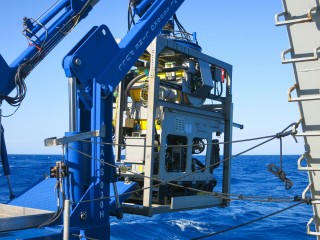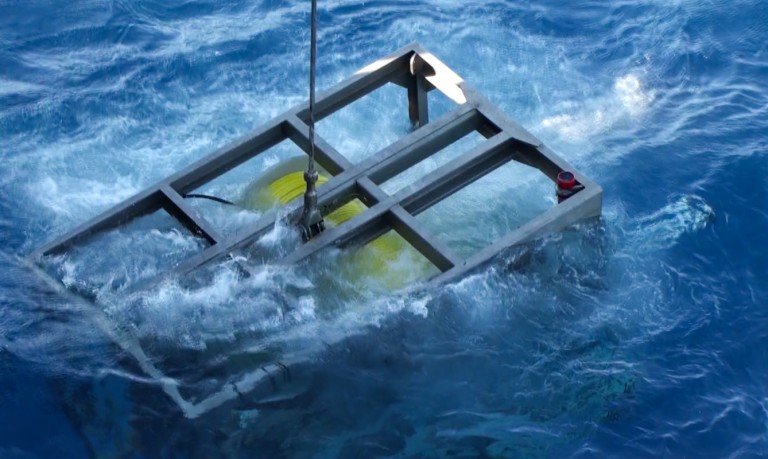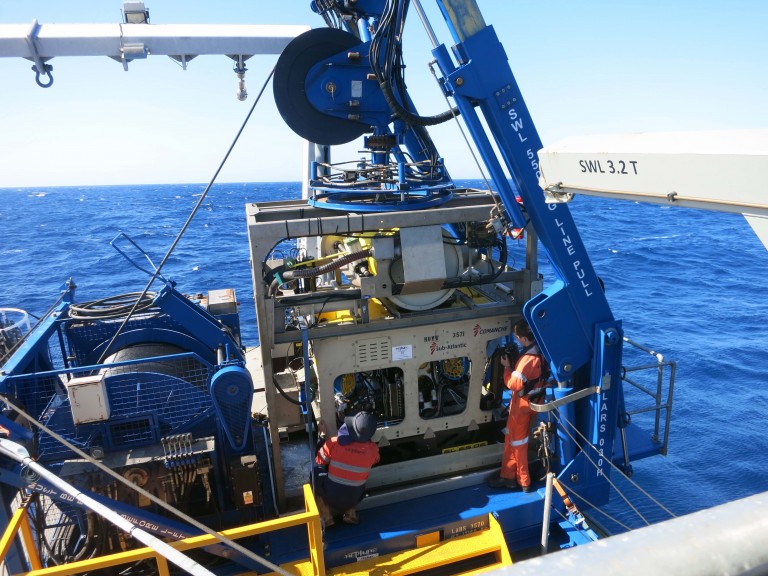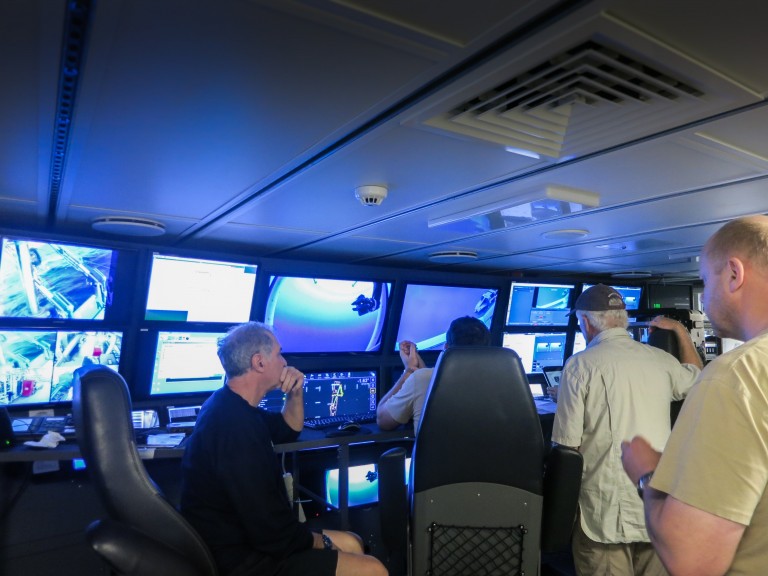
Yesterday, we sent the Remotely Operated Vehicle (ROV) ‘Comanche’ for it’s first test dive down to 100 meters (328 ft) in Perth Canyon. The ROV operators tested the manipulators, also known as the ‘claws’, and the opening/closing of the collection trays successfully. Today, we will revisit the same site and spend more time exploring the north Canyon area. With all the excitement of the dives, many of you might be wondering about the ROV that is being deployed off of Research Vessel Falkor. Well look no more, as we have the answers to all of your questions about this deep-diving vehicle.
What is an ROV?
Remotely Operated Vehicles, or ROVs, are underwater robots that allow the controller to be located above the water (on Falkor in our case). ROVs are connected topside via an umbilical link that houses communications cables, an energy source and information transfer.

How deep can the ROV dive?
2000 meters (1.24 miles)
What is the ROV on board R/V Falkor called?
ROV Comanche
How many of this type of ROV are there?
32 in total
How much does the ROV weigh?
The ROV alone weighs 1100 kg (2425 lbs), with the frame it becomes 2.5 tonnes (5512 lbs)
Where was the ROV built?
Western Australia

How specialized did the Comanche ROV need to be for this excursion to Perth Canyon?
The Comanche ROV needed to be outfitted with a special tray, which was also built in Western Australia. The ROV manipulators also have a specialized claw that has been added for grabbing and cutting samples.
How long can the ROV stay down?
2-3 weeks (if it has to), but there are limited spaces in the trays for specimen collection, so usually the ROV dives are less than eight hours.
How is the power connected to the ROV?
Power is supplied to the ROV through an umbilical cord or cable.
How many arms/manipulators does the ROV have?
Two
How many people on Falkor can operate the ROV?
We currently have three people on board Falkor assisting with ROV operations, one operator piloting/flying or driving the ROV, one co-pilot, and another person to monitor the operation. We also have plenty of other crew working to help support the operations including deploying and retrieving the vehicle to and from the ship, tracking the vehicle in relation to Falkor, as well as camera operators and staff organizing live-streaming of the dives. The scientists on board also monitor the dives along with the marine technicians looking for corals and other important features.

Why does the ROV not have any panels around the outside?
This is to ensure that the ROV does not get pushed around by the currents.
Why does the ROV sit inside of a larger cage?
The ROV sits inside the cage to protect it from the ship during deployment and retrieval.
You can watch the ROV dives live here on the Schmidt Ocean Institute website. We look forward to seeing what the Comanche ROV finds in Perth Canyon over the next seven days.


